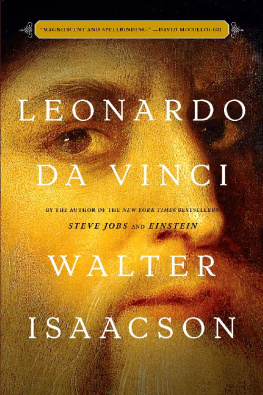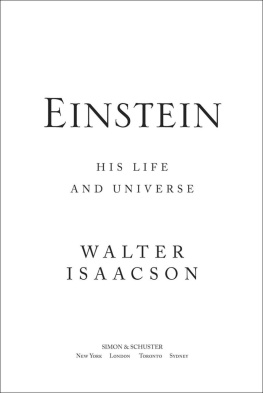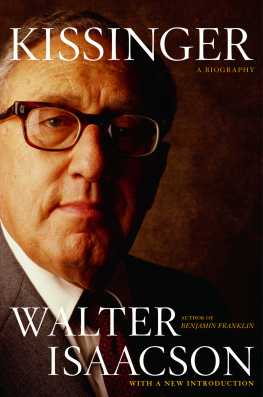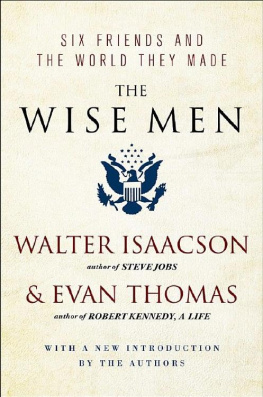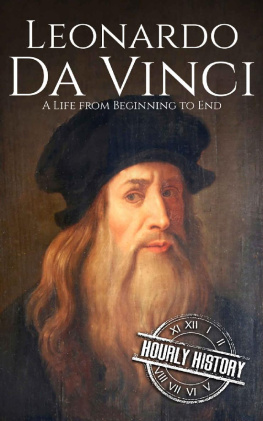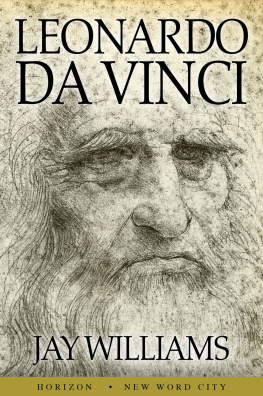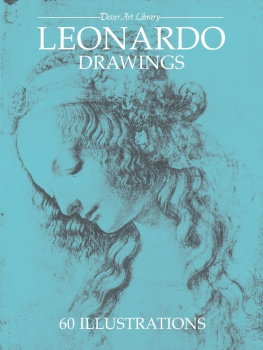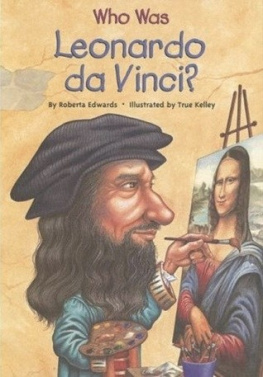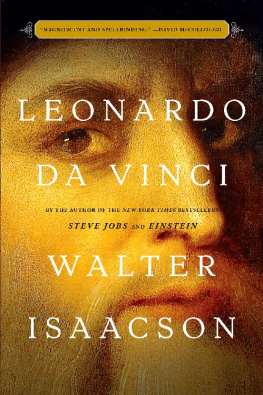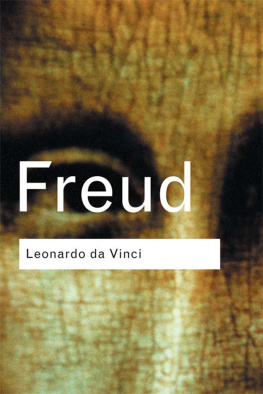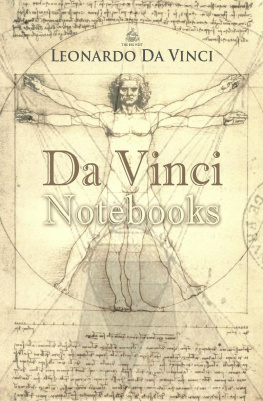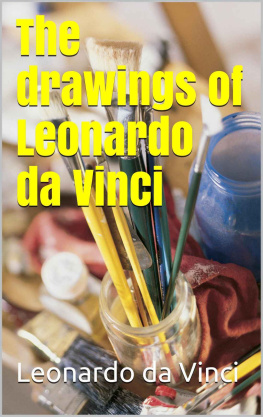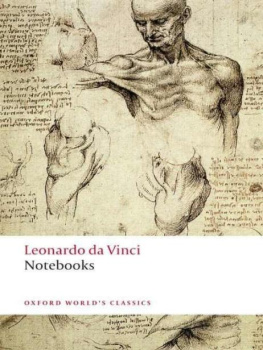Walter Isaacson - Leonardo da Vinci
Here you can read online Walter Isaacson - Leonardo da Vinci full text of the book (entire story) in english for free. Download pdf and epub, get meaning, cover and reviews about this ebook. year: 2017, publisher: Simon & Schuster, genre: Non-fiction. Description of the work, (preface) as well as reviews are available. Best literature library LitArk.com created for fans of good reading and offers a wide selection of genres:
Romance novel
Science fiction
Adventure
Detective
Science
History
Home and family
Prose
Art
Politics
Computer
Non-fiction
Religion
Business
Children
Humor
Choose a favorite category and find really read worthwhile books. Enjoy immersion in the world of imagination, feel the emotions of the characters or learn something new for yourself, make an fascinating discovery.
- Book:Leonardo da Vinci
- Author:
- Publisher:Simon & Schuster
- Genre:
- Year:2017
- Rating:3 / 5
- Favourites:Add to favourites
- Your mark:
- 60
- 1
- 2
- 3
- 4
- 5
Leonardo da Vinci: summary, description and annotation
We offer to read an annotation, description, summary or preface (depends on what the author of the book "Leonardo da Vinci" wrote himself). If you haven't found the necessary information about the book — write in the comments, we will try to find it.
Leonardo da Vinci — read online for free the complete book (whole text) full work
Below is the text of the book, divided by pages. System saving the place of the last page read, allows you to conveniently read the book "Leonardo da Vinci" online for free, without having to search again every time where you left off. Put a bookmark, and you can go to the page where you finished reading at any time.
Font size:
Interval:
Bookmark:
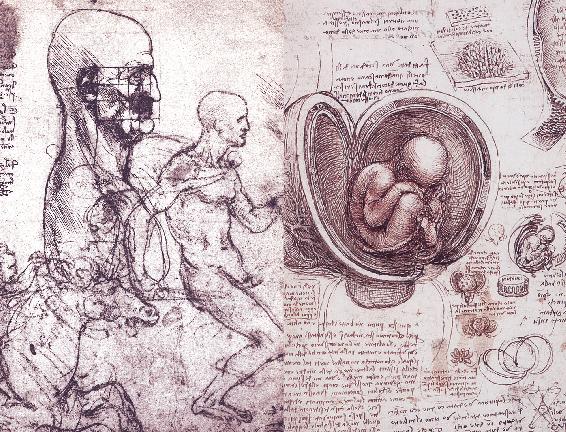
Thank you for downloading this Simon & Schuster ebook.
Get a FREE ebook when you join our mailing list. Plus, get updates on new releases, deals, recommended reads, and more from Simon & Schuster. Click below to sign up and see terms and conditions.
CLICK HERE TO SIGN UP
Already a subscriber? Provide your email again so we can register this ebook and send you more of what you like to read. You will continue to receive exclusive offers in your inbox.

Marco Cianchi professionally read the manuscript of this book, made many suggestions, helped with translations, and was a guide in Italy. A professor at the Accademia di Belle Arti in Florence, he has degrees in art history from the universities of Florence and Bologna. He is a longtime collaborator with Carlo Pedretti and is the author of many books, including Le macchine di Leonardo (Becocci, 1981), Leonardo, I Dipinti (Giunti, 1996), and Leonardo, Anatomia (Giunti, 1997). He has become a delightful friend.
Juliana Barone of Birkbeck College, University of London, was also a professional reader of much of the manuscript. She wrote her doctoral dissertation on Leonardo at Oxford and is the author of Leonardo: The Codex Arundel (British Library, 2008), Studies of Motion: Drawings by Leonardo from the Codex Atlanticus (De Agostini, 2011), The Treatise on Painting (De Agostini, 2014), and the forthcoming books Leonardo, Poussin and Rubens and Leonardo in Britain .
Dr. Barone was recommended to me by Martin Kemp, emeritus professor of art history at Oxford University and one of the great Leonardo scholars of our era. Over the past fifty years, he has authored or co-authored seventy-two books and scholarly articles on Leonardo. He graciously spent time with me at Trinity College, Oxford, shared with me his research findings and an early manuscript of his co-authored book Mona Lisa: The People and the Painting (Oxford University Press, 2017), and in countless emails offered his opinions on a variety of issues.
Frederick Schroeder, the curator of the Codex Leicester for Bill Gates, and Domenico Laurenza, an author of many books on Leonardos engineering and inventions, read my sections on the Codex Leicester and provided me with their own updated translations from that work, scheduled for publication in 2018. David Linley took me to Windsor Castle to see the Leonardo drawings there and introduced me to the curator and Leonardo scholar Martin Clayton.
Other Leonardo scholars and curators who read parts of the manuscript, gave me access to collections, provided assistance, or offered ideas include Luke Syson, formerly of the National Gallery in London and now at the Metropolitan Museum of Art in New York City; Vincent Delieuvin and Ina Giscard dEstaing of the Louvre; David Alan Brown of the National Gallery of Art in Washington, DC; Valeria Poletto of the Gallerie dellAccademia in Venice; Pietro Marani of the Politecnico di Milano; Alberto Rocca of the Biblioteca Ambrosiana in Milan; and Jacqueline Thalmann of Christ Church, Oxford. I am also grateful to the staffs of the Villa I Tatti in Florence, the Dumbarton Oaks Library in Washington, DC, and the Harvard Fine Arts Library. Getty Images, led by Dawn Airey, adopted this book as a special project; the team overseeing the acquisition of images included David Savage, Eric Rachlis, Scott Rosen, and Jill Braaten. At the Aspen Institute, my deep thanks go to Pat Zindulka, Leah Bitounis, Eric Motley, Chloe Tabah, and other indulgent colleagues.
All of my books for more than three decades have been published by Simon & Schuster, and that is because the team there is extraordinarily talented: Alice Mayhew, Carolyn Reidy, Jonathan Karp, Stuart Roberts (who shepherded this book and its illustrations), Richard Rhorer, Stephen Bedford, Jackie Seow, Kristen Lemire, Judith Hoover, Julia Prosser, Lisa Erwin, Jonathan Evans, and Paul Dippolito. During my entire writing career, Amanda Urban has been my agent, adviser, wise counselor, and friend. Strobe Talbott, my colleague from when I joined Time in 1979, has read the drafts of every one of my books, beginning with The Wise Men , made incisive comments, and offered encouragement; as we enter the dessert course of our careers, I savor the procession of memories that began when we were in our salad days.
As usual, my greatest gratitude goes to my wife, Cathy, and our daughter, Betsy, who are wise, smart, supportive, and very loving. Thank you.
Cesare Borgia (c. 14751507). Italian warrior, illegitimate son of Pope Alexander VI, subject of Machiavellis The Prince , Leonardo employer.
Donato Bramante (14441514). Architect, friend of Leonardo in Milan, worked on Milan Cathedral, Pavia Cathedral, and St. Peters in the Vatican.
Caterina Lippi (c. 14361493). Orphaned peasant girl from near Vinci, mother of Leonardo; later married Antonio di Piero del Vaccha, known as Accattabriga.
Charles dAmboise (14731511). French governor of Milan from 1503 to 1511, Leonardo patron.
Beatrice dEste (14751497). From Italys most venerable family, married Ludovico Sforza.
Isabella dEste (14741539). Beatrices sister, the Marchesa of Mantua, tried to get Leonardo to paint her portrait.
Francesco di Giorgio (14391501). Artist-engineer-architect who worked with Leonardo on Milans cathedral tower, traveled with him to Pavia, translated Vitruvius, and drew a version of Vitruvian man.
Francis I (14941547). King of France from 1515, last patron of Leonardo.
Pope Leo X, Giovanni de Medici (14751521). Son of Lorenzo de Medici, elected pope in 1513.
Louis XII (14621515). King of France from 1498, conquered Milan in 1499.
Niccol Machiavelli (14691527). Florentine diplomat and writer, became envoy to Cesare Borgia and friend of Leonardo in 1502.
Giuliano de Medici (14791516). Son of Lorenzo, brother of Pope Leo X, Leonardos patron in Rome.
Lorenzo the Magnificent de Medici (14491492). Banker, art patron, and de facto ruler of Florence from 1469 until his death.
Francesco Melzi (c. 1493c. 1568). From a noble Milan family, joined Leonardos household in 1507 and became a surrogate son and heir.
Michelangelo Buonarroti (14751564). Florentine sculptor and rival of Leonardo.
Luca Pacioli (14471517). Italian mathematician, friar, and friend of Leonardo.
Piero da Vinci (14271504). Florentine notary, father of Leonardo, did not marry Leonardos mother, subsequently had eleven other children with four wives.
Andrea Salai, born Gian Giacomo Caprotti da Oreno (14801524). Entered Leonardos household at age ten and was dubbed Salai, meaning Little Devil.
Ludovico Sforza (14521508). De facto ruler of Milan from 1481, Duke of Milan from 1494 until his ouster by the French in 1499, patron of Leonardo.
Andrea del Verrocchio (c. 14351488). Florentine sculptor, goldsmith, and artist in whose workshop Leonardo trained and worked from 1466 to 1477.
The ducat was the gold coin of Venice. The florin was the gold coin of Florence. Both contained 3.5 grams (0.12 ounces) of gold, which would make them worth about $138 in 2017. One ducat or florin was worth approximately 7 lire or 120 soldi, which were silver coins.
The cover is a detail of an oil painting in Florences Uffizi Gallery that was once thought to be a self-portrait painted by Leonardo. Based on recent X-ray analysis, it is now considered to be a portrait of Leonardo by an unknown artist done in the 1600s. It is based on, or is the basis for, a similar portrait rediscovered in Italy in 2008, called the Lucan portrait of Leonardo da Vinci. It has been copied many times. A watercolor-on-ivory version painted in the 1770s by Giuseppe Macpherson is in the British Royal Collection and in 2017 was in the show Portrait of the Artist in the Queens Gallery of Buckingham Palace.
Font size:
Interval:
Bookmark:
Similar books «Leonardo da Vinci»
Look at similar books to Leonardo da Vinci. We have selected literature similar in name and meaning in the hope of providing readers with more options to find new, interesting, not yet read works.
Discussion, reviews of the book Leonardo da Vinci and just readers' own opinions. Leave your comments, write what you think about the work, its meaning or the main characters. Specify what exactly you liked and what you didn't like, and why you think so.

